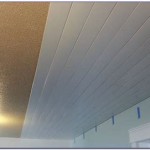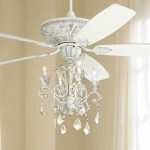Can You Hang A Tapestry On The Ceiling Of Rooms In Japan?
The question of whether one can hang a tapestry on the ceiling of rooms in Japan is multifaceted, influenced by factors such as construction materials, cultural sensitivities, and practical considerations. While not inherently prohibited, successfully and appropriately executing such a decorative endeavor requires careful assessment and planning. Understanding the nuances of Japanese architecture and interior design principles is crucial before attempting to affix any textile art to the ceiling.
Unlike some modern Western buildings, many traditional and even some contemporary Japanese homes utilize different building materials and construction techniques. These differences can significantly impact the feasibility and method of hanging a tapestry from the ceiling. Furthermore, considerations beyond mere structural integrity are important. The aesthetic sensibilities and traditional values associated with Japanese interiors can also play a significant role in determining the appropriateness of such a decoration.
Assessing Ceiling Material and Structure
The type of ceiling material is the most critical factor in determining the feasibility of hanging a tapestry. Traditional Japanese homes often feature ceilings constructed from materials like wood (cedar or cypress), plaster, or tatami mats layered over a wooden frame. Modern apartments might use drywall, concrete, or a combination of materials.
Wooden ceilings offer the most straightforward option, as nails, screws, or hooks can often be directly attached. However, care must be taken to avoid splitting the wood, especially if it is thin or aged. Pre-drilling pilot holes is recommended. The weight of the tapestry must also be considered. A heavy tapestry will require more secure anchoring, such as using longer screws that penetrate deeper into the underlying support beams (if accessible). If the wood is highly varnished or treated, the adhesive properties of tape or hooks may be compromised.
Plaster ceilings, while potentially aesthetically pleasing, present a more challenging situation. Plaster is inherently fragile and prone to crumbling under pressure. Simply hammering a nail into plaster is likely to result in damage. Special anchors designed for plaster are available, but their weight-bearing capacity must be carefully evaluated against the weight of the tapestry. The installation process also requires precision to avoid cracking the surrounding plaster.
Tatami-layered ceilings are perhaps the most problematic. Tatami mats are not designed to support weight from above. Attempting to hang a tapestry directly from a tatami ceiling is likely to damage the mats and the underlying structure. Any attempt would require careful investigation of the supporting frame and potentially involve attaching supports that bypass the tatami layer altogether.
Modern materials such as drywall offer options similar to those in Western buildings. Drywall anchors are specifically designed to provide secure attachment points in drywall. Concrete ceilings require the use of concrete screws or anchors, which necessitate specialized tools for installation. Regardless of the material, accurately locating studs or joists within the ceiling structure is paramount for secure and reliable anchoring. Stud finders or professional assistance may be necessary for this purpose.
Weight Distribution and Hanging Methods
The weight of the tapestry is a crucial consideration. Lightweight tapestries might be hung with adhesive hooks designed for ceilings, provided the ceiling surface is clean, smooth, and compatible with the adhesive. However, relying solely on adhesive for heavier tapestries is not recommended, as the risk of failure and potential damage is high. Even with adhesive hooks, it is essential to regularly inspect them to ensure they remain securely attached.
For heavier tapestries, distributing the weight across multiple attachment points is essential. This can be achieved by using a hanging rod or batten to which the tapestry is attached, and then suspending the rod from multiple points on the ceiling. This spreads the load and reduces the stress on any single point. The hanging rod should be made of a sturdy material like wood or metal, and its length should be appropriate for the width of the tapestry. The method of attaching the tapestry to the rod can vary, including using sewn loops, clips, or Velcro.
Another option is to create a lightweight frame for the tapestry and then attach the frame to the ceiling. This provides a more rigid structure and distributes the weight more evenly. The frame can be constructed from wood or metal, and the tapestry can be attached to the frame using staples, tacks, or adhesive. The frame should be securely attached to the ceiling using appropriate anchors and fasteners.
Regardless of the chosen method, ensuring the tapestry hangs level is vital. Using a level and carefully measuring the distance between the attachment points will help to achieve a visually appealing and balanced result. Periodic adjustments may be necessary as the fabric stretches or the hanging hardware settles.
Cultural and Aesthetic Considerations
Beyond the practical aspects of hanging a tapestry, cultural and aesthetic factors should also be considered. Traditional Japanese interior design emphasizes simplicity, natural materials, and a sense of harmony with the surrounding environment. Introducing a large, potentially ornate tapestry could disrupt this balance if not carefully considered.
In traditional Japanese rooms (washitsu), elements like tatami mats, shoji screens, and tokonoma (alcoves) define the space. These spaces are typically sparsely decorated, with an emphasis on natural textures and subtle colors. A tapestry with a bold design or vibrant colors might clash with the overall aesthetic.
However, modern Japanese homes (yoshitsu) often incorporate more Western design elements, offering greater flexibility in decorating. In these spaces, a tapestry could potentially complement the existing decor, provided it is chosen carefully. Considering the size, color palette, and subject matter of the tapestry in relation to the rest of the room is crucial.
The concept of "ma" (間), which refers to negative space or emptiness, is also important in Japanese aesthetics. Avoiding overcrowding a space and allowing for areas of visual rest is highly valued. Hanging a tapestry on the ceiling could potentially violate this principle if it creates a sense of claustrophobia or overwhelms the room. It is important to consider the visual impact of the tapestry and ensure it does not detract from the overall sense of balance and tranquility.
Ultimately, the decision to hang a tapestry on the ceiling of a room in Japan depends on a combination of factors. A thorough assessment of the ceiling material and structure, careful consideration of weight distribution and hanging methods, and sensitivity to cultural and aesthetic norms are all essential for a successful and appropriate outcome. Consulting with a professional interior designer or contractor familiar with Japanese architecture can provide valuable guidance and ensure that the project is executed safely and aesthetically pleasingly.

8 Ways To Hang A Tapestry At Home How Interiors By Jacquin

Putting Up My Tapestries Walltapestry Ceilingtapestry Tapestry Wall Tiktok

8 Ways To Hang A Tapestry At Home How Interiors By Jacquin

How To Hang A Tapestry 8 Diffe Ways Architectural Digest

Japanese Anime Tapestry Black And White Yin Yang Koi Fish For Bedroom Aesthetic Asian Wave Cherry Blossom Tapestries Poster Beach Blanket College Dorm Home Decor 60x40in Com

6 Ways To Hang A Wall Tapestry Wikihow

Mountain Tapestry Abstract Of Mountains In Sunset Landscape Art Modern Wall Japanese Hanging

21 Ridiculously Clever Ways To Decorate Your Ceiling

Tapestry Japanese Ocean Wave Wall Decorations Cherry Blossom Tree Backdrop Sunset Hanging Kanagawa For Party Home 59 X 78 7 Inch

Ancient Sun And Moon Big Tapestry On Roomtery
Related Posts








